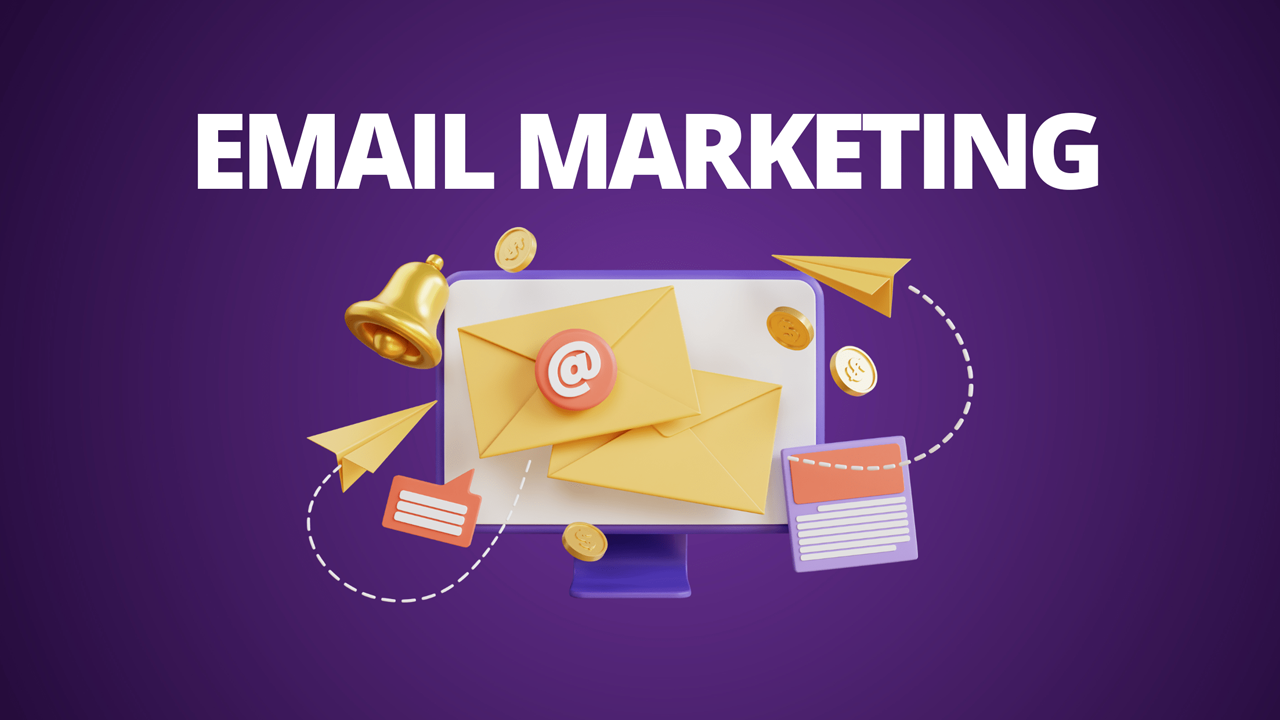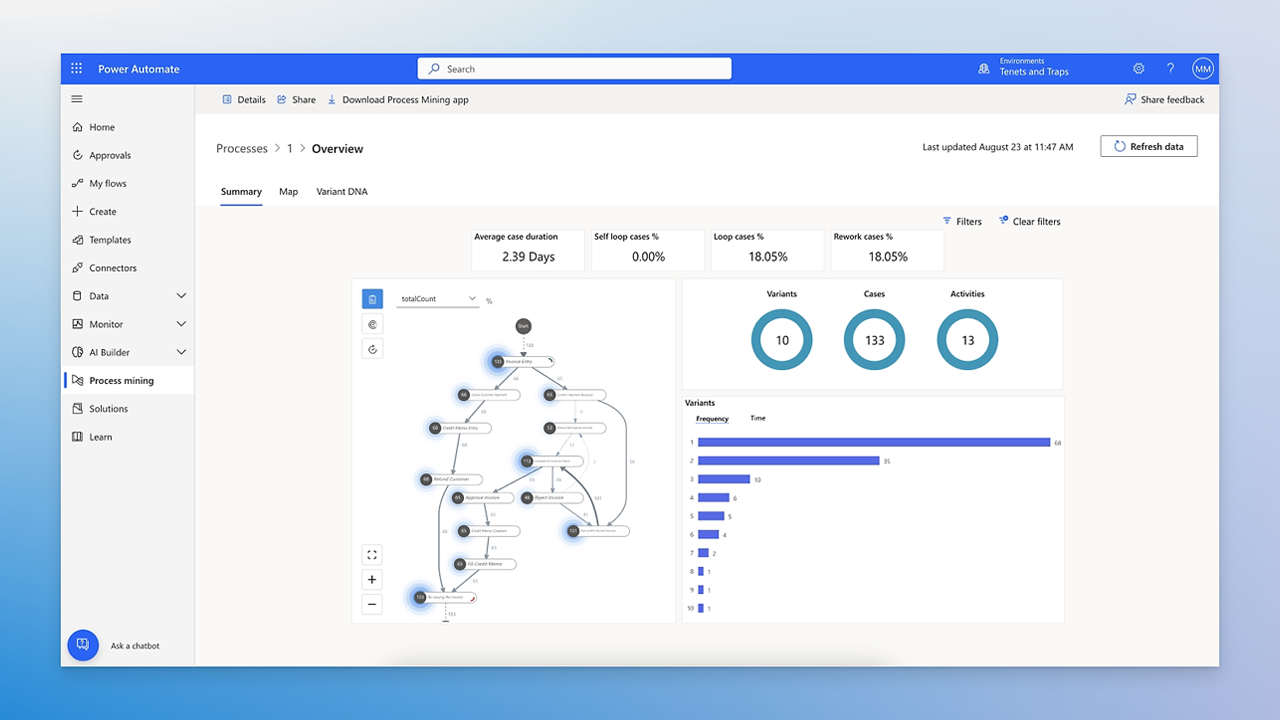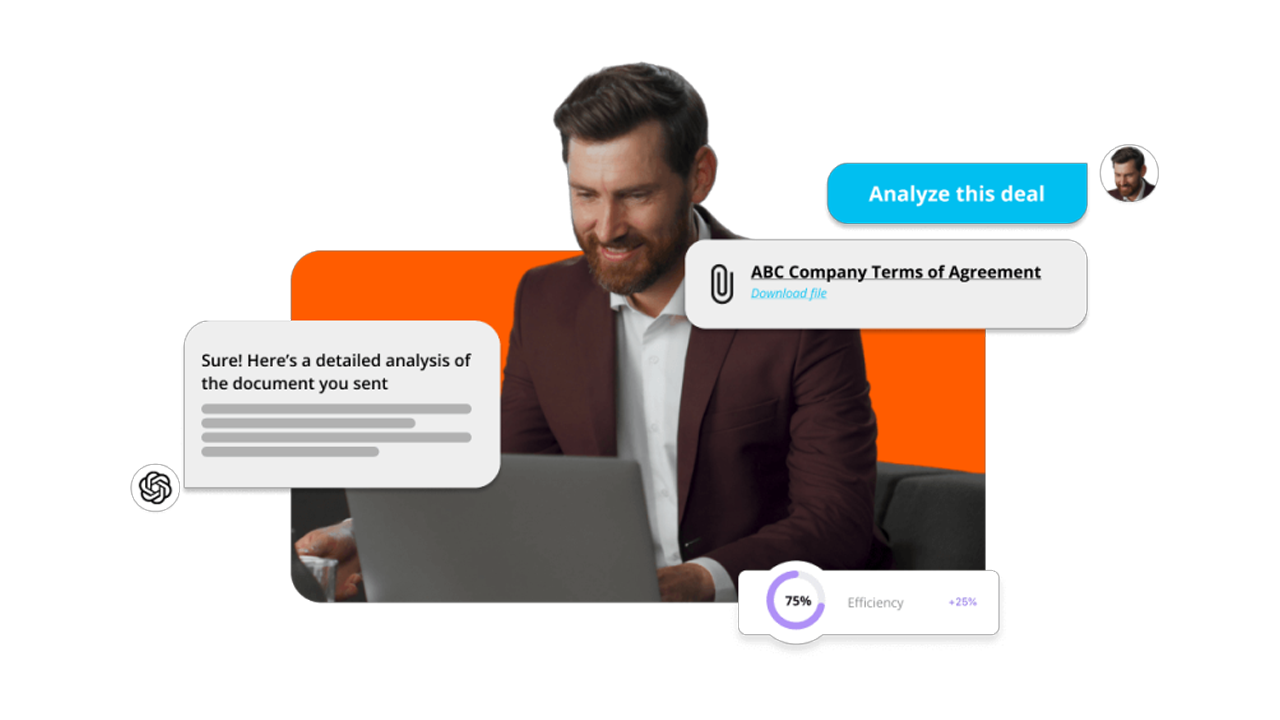
Email marketing delivers an astounding $42 return for every $1 spent, making it the highest ROI channel for affiliate marketers. Yet most affiliates barely scratch the surface of email marketing’s potential, missing out on the 66.4% higher income that email-savvy affiliates enjoy compared to those relying solely on other channels.
This comprehensive A-Z guide, the ultimate guide to email affiliate marketing, will transform your affiliate marketing efforts from scattered attempts into a systematic, profitable email marketing machine. Whether you’re promoting products on affiliate networks like Digistore24 or working directly with affiliate programs, email remains the most reliable way to build lasting relationships with your audience and drive consistent affiliate marketing success.
Email marketing isn’t just another channel for affiliate marketers—it’s the foundation that turns one-time visitors into loyal customers who trust your recommendations. While social media algorithms change and paid advertising costs soar, including the rising expense of digital ads, your email list remains a direct line to your target audience that you own and control.
A - Autoresponders & Automation Setup

Autoresponders form the backbone of successful affiliate marketing program implementation. Your choice of email marketing platform can make or break your affiliate marketing efforts, so selecting the right service requires careful consideration of affiliate-specific features.
When evaluating autoresponder platforms for affiliate marketing, prioritize services that offer robust automation capabilities, affiliate link tracking, and integration with major affiliate networks. ConvertKit excels for content creators, while ActiveCampaign provides advanced automation for experienced affiliate marketers. Mailchimp offers user-friendly interfaces for beginners, though its affiliate marketing policies require review.
Setting up automated email sequences for affiliate promotions starts with mapping your customer journey. Create welcome sequences that introduce subscribers to your expertise before presenting affiliate offers. Design product-specific sequences that educate prospects about problems your affiliate products solve, building trust before making recommendations.
Trigger-based emails revolutionize how you promote affiliate products. Configure triggers based on subscriber behavior: send fitness supplement recommendations to those who download workout guides, or promote business courses to subscribers who engage with entrepreneurship content. These behavioral triggers increase relevance and drive higher conversion rates.
Timing and frequency in marketing automation require delicate balance. Space promotional emails appropriately—typically no more than one affiliate offer per week for most niches. Set up your automation to deliver value-packed content between promotional messages, maintaining the crucial 80/20 rule of valuable content to direct promotions.
Integration with affiliate tracking systems ensures accurate commission attribution. Use UTM parameters in your affiliate links within automated sequences, and configure your autoresponder to work seamlessly with affiliate network tracking. This technical foundation prevents lost commissions and provides clear ROI data for your email campaigns.
B - Building Your Email List

Building your email list strategically determines the success of your affiliate marketing program. Effective lead magnets specifically designed for affiliate marketing niches attract subscribers who are genuinely interested in the products you’ll promote.
Create lead magnets that directly relate to your affiliate offers. If you promote productivity software through affiliate programs, offer templates or workflow guides. For fitness affiliate products, provide workout plans or nutrition guides. This alignment ensures your subscribers are pre-qualified prospects for your affiliate recommendations.
Opt-in forms placement and design significantly impact your list growth. Position forms strategically throughout your wordpress website: in the header, within blog content, and as exit-intent popups. (Blogs can be a great anchor for the whole process. For more on optimizing and monetizing with blogs, see "How Long does it Take to Make Money with an Affiliate Blog?")
A/B test different form designs, but prioritize clarity over creativity. Your opt in forms should clearly communicate the value subscribers receive.
Content upgrades accelerate list building by offering specific, valuable resources related to individual pieces of content. When writing about email marketing strategies, offer an email template download. For affiliate product reviews, provide comparison charts or exclusive discount codes. This targeted approach attracts subscribers with genuine interest in your niche.
Landing page optimization for list building requires ruthless focus on a single goal: capturing email addresses. Remove navigation menus, minimize distractions, and craft compelling headlines that emphasize the value of your lead magnet. Test different page layouts, but remember that high-converting landing pages typically convert 20-30% of visitors.
Balance organic and paid methods for sustainable list growth. Organic traffic from SEO and social media provides long-term value but grows slowly. Paid advertising on platforms like Facebook or Google accelerates growth but requires budget and expertise. Start with organic methods to prove your concept, then scale with paid traffic once you’ve optimized your funnel.
C - Compliance & Legal Requirements

Compliance in affiliate email marketing protects your business and maintains deliverability. The CAN-SPAM Act requires specific elements in every affiliate email: clear sender identification, truthful subject lines, and easy unsubscribe options.
Your emails must include your physical mailing address and clearly identify you as the sender. Subject lines cannot be misleading—avoid promising specific results unless you can guarantee them. This applies especially to affiliate products in health, finance, or business opportunity niches where exaggerated claims are common.
GDPR requirements affect international subscribers and demand explicit consent for email marketing. Implement double opt-in processes for European subscribers, clearly explain how you’ll use their data, and provide easy access to personal data deletion. Many email marketing platforms offer GDPR-compliant features, but understanding the requirements remains your responsibility.
FTC disclosure requirements for affiliate promotions mandate clear, conspicuous disclosure of affiliate relationships. Include phrases like “This email contains affiliate links” or “I may earn a commission from purchases” prominently in your emails. Placing disclosures in fine print or at the end of emails doesn’t meet FTC standards.
Unsubscribe requirements go beyond simple compliance—they protect your sender reputation. Process unsubscribe requests within 10 business days, never charge fees for opting out, and resist the temptation to send “one last email” to departing subscribers. Clean lists perform better than large, unengaged lists.
Data protection and subscriber privacy considerations build trust and prevent legal issues. Store subscriber data securely, never sell or share lists without explicit permission, and be transparent about your data practices. Many successful affiliate marketers create simple privacy policies explaining exactly how they use subscriber information.
D - Deliverability Optimization

Deliverability optimization ensures your affiliate emails reach subscribers’ inboxes rather than spam folders. Email authentication setup through SPF, DKIM, and DMARC records verifies your legitimacy to email providers and dramatically improves delivery rates.
SPF records specify which servers are authorized to send emails from your domain. DKIM adds digital signatures to your emails, proving they haven’t been tampered with during transmission. DMARC policies tell receiving servers how to handle emails that fail authentication checks. Most email marketing platforms provide guidance for setting up these records.
Avoiding spam folders requires understanding what triggers spam filters. Common triggers include excessive use of words like “free,” “guarantee,” or “limited time,” too many exclamation points, and suspicious link patterns. However, engagement metrics matter more than content—emails with high open and click rates rarely land in spam folders.
Sender reputation management involves monitoring your domain and IP reputation across email providers. Use tools like Google Postmaster Tools and Microsoft SNDS to track your reputation. Sudden drops in deliverability often indicate reputation issues that require immediate attention.
Email frequency and timing optimization balances staying top-of-mind with avoiding subscriber fatigue. Test different sending frequencies for your audience—some niches tolerate daily emails, while others prefer weekly contact. Monitor unsubscribe rates and engagement metrics to find your optimal frequency.
IP warming strategies for new senders gradually build reputation with email providers. Start by sending to your most engaged subscribers, gradually increasing volume over 2-4 weeks. Sudden volume spikes from new IPs often trigger spam filters, regardless of content quality.
E - Email Design & Templates

Email design significantly impacts your affiliate marketing success, with mobile-responsive templates being non-negotiable since over 60% of emails are opened on mobile devices. Your affiliate email campaigns must display perfectly across all devices to maximize conversions (see here for more tips on the best ways to increase conversions).
Visual hierarchy guides readers through your affiliate promotions systematically. Use larger fonts for headlines, contrasting colors for call-to-action buttons, and white space to separate different sections. The goal is leading readers naturally from your opening hook to your affiliate link without overwhelming them.
Call-to-action button design and placement can double your click through rates. Use contrasting colors that stand out from your email background, write action-oriented button text like “Get Instant Access” instead of generic “Click Here,” and place buttons both above and below the fold for maximum visibility.
Brand consistency in affiliate email campaigns builds trust and recognition. Develop a consistent color scheme, typography, and layout style that reflects your personal brand. Even when promoting various affiliate products, maintain visual consistency so subscribers immediately recognize your emails.
A/B testing different email designs reveals what resonates with your audience. Test single-column versus two-column layouts, image-heavy versus text-focused designs, and different color schemes. However, avoid testing too many variables simultaneously—focus on one design element per test for clear results.
Modern email templates should load quickly and display consistently across email clients. Stick to web-safe fonts, optimize images for fast loading, and test your templates in multiple email clients. Services like Litmus or Email on Acid help identify display issues before sending.
F - Follow-up Sequences

Follow-up sequences maximize the value of every subscriber and create multiple touchpoints for affiliate promotions. Effective affiliate product launch sequences build anticipation while providing value, leading to higher conversion rates than single promotional emails.
Creating multi-email launch sequences starts with pre-launch content that establishes the problem your affiliate product solves. Follow with educational content that positions you as a trusted advisor, then present the affiliate solution as the logical next step. This approach feels natural rather than pushy.
Post-purchase follow-up strategies extend beyond the initial sale to build long-term relationships. Send thank-you emails, provide additional resources related to the purchased product, and gradually introduce complementary affiliate offers. These sequences often generate more revenue than initial sales emails.
Re-engagement campaigns for inactive subscribers attempt to revive interest before removing unengaged contacts. Create “We miss you” sequences offering exclusive content or discount codes. Segment based on engagement levels—recent subscribers might need different messaging than long-term inactive contacts.
Cross-promotion sequences for related affiliate products leverage successful purchases to introduce complementary offers. If someone buys a course through your affiliate link, follow up with tool recommendations that enhance their learning experience. This strategy increases customer lifetime value significantly.
Timing optimization for follow-up emails requires testing and observation. Space follow-up emails appropriately—too frequent feels pushy, while too infrequent misses opportunities. Most successful affiliate marketers use 2-3 day intervals between promotional follow-ups, with longer gaps for pure value content.
G - Giveaways & Lead Magnets

Giveaways and lead magnets specifically designed for affiliate marketing attract subscribers likely to purchase your recommended products. Irresistible lead magnets solve immediate problems while positioning you as the expert who helps solve bigger challenges through affiliate products.
Designing lead magnets requires understanding your target audience’s immediate pain points. Create resources that provide quick wins—cheat sheets, templates, mini-courses, or tool lists. The key is making your lead magnet valuable enough that people would pay for it, then offering it free in exchange for email addresses.
Contest and giveaway strategies for list building generate rapid subscriber growth when executed properly. Partner with affiliate companies to offer their products as prizes, clearly stating that entrants join your email list. This approach attracts subscribers interested in your niche while building relationships with affiliate partners.
Affiliate product samples as lead magnets work particularly well for digital products. Offer free chapters from courses you promote, trial access to software, or condensed versions of full programs. This strategy lets prospects experience product quality before committing to purchases.
Free training and webinars attract high-quality subscribers who are actively seeking solutions. Host webinars addressing common problems in your niche, provide genuine value during the training, then present relevant affiliate products as logical next steps. This approach builds trust while pre-qualifying prospects.
Digital downloads and exclusive content offers scale easily and provide immediate gratification. Create industry reports, template libraries, or exclusive interviews with experts. These resources establish your authority while attracting subscribers who appreciate high quality content and are likely to trust your affiliate recommendations.
H - Headlines That Convert

Headlines determine whether your affiliate emails get opened or deleted, making headline optimization crucial for affiliate marketing success. Psychology-driven headline formulas tap into fundamental human motivations: curiosity, fear, benefit-seeking, and urgency.
Curiosity gaps create irresistible headlines by promising information while withholding key details. “The productivity tool 99% of entrepreneurs ignore (but shouldn’t)” generates curiosity about both the tool and why it’s ignored. This technique works especially well for affiliate product introductions.
Benefit-driven headlines immediately communicate value to subscribers. “How to automate your business for 3 extra hours daily” promises a specific, desirable outcome. When promoting affiliate products, focus headlines on benefits rather than features—people buy outcomes, not tools.
Subject line length optimization balances descriptiveness with mobile display limits. Aim for 40-50 characters to ensure full visibility on mobile devices. Longer headlines can work if the most compelling part appears in the first 40 characters. Test different lengths to find what resonates with your audience.
Personalization techniques in email headlines increase open rates significantly. Use subscriber names, location data, or behavioral information to create relevant headlines. “John, the marketing tool you asked about” performs better than generic headlines because it feels personally relevant.
Testing and measuring headline performance requires systematic approach and statistical significance. Test one variable at a time — length, personalization, or emotional trigger. Run tests on substantial portions of your list to ensure reliable results, and always measure both open rates and downstream conversions.
I - Integration Strategies

Integration strategies amplify your affiliate marketing efforts by connecting email marketing with other channels. Social media campaigns drive traffic to your email opt-ins, while email sequences nurture leads generated from social platforms.
Connecting email marketing with social media campaigns creates powerful synergy. Use Instagram stories to promote lead magnets, share email content on LinkedIn to demonstrate expertise, and create Facebook groups that complement your email content. Each channel feeds the others, multiplying your reach.
Blog content and email marketing synergy transforms website visitors into engaged subscribers. Every blog post should include relevant opt-in opportunities, while email content can expand on blog topics. This integration extends content lifespan and provides multiple touchpoints for affiliate promotions.
Affiliate network integration with email platforms streamlines tracking and optimization. Use platforms that integrate with Digistore24 to automatically track conversions from email campaigns. This integration provides clearer ROI data and simplifies commission tracking.
CRM system connections enable sophisticated segmentation and personalization. Connect your email platform with customer relationship management tools to track the complete customer journey from first email open to affiliate purchase. This data reveals which email types drive the highest lifetime value.
Multi-channel affiliate promotion strategies recognize that customers interact with brands across multiple touchpoints. Coordinate email campaigns with social media posts, blog content, and even YouTube videos, as video content can significantly enhance engagement and conversion rates in affiliate marketing.
J - Journey Mapping

Journey mapping visualizes how subscribers progress from awareness to purchase, enabling strategic email placement throughout the customer journey. Understanding consumer behavior at each stage helps inform email placement, ensuring you deliver the right message at the right time for maximum affiliate marketing impact.
Customer journey stages in affiliate email marketing typically include awareness (problem recognition), consideration (solution research), decision (vendor evaluation), and retention (ongoing relationship). Different affiliate partners can influence consumers at various customer journey stages, shaping their decisions and engagement.
Mapping email content to buyer journey phases ensures relevance and timing. Analyzing consumer behavior data allows you to optimize messaging for each phase. Awareness-stage emails focus on education and problem identification without heavy affiliate promotion. Consideration-stage emails compare solutions and introduce affiliate products as options. Decision-stage emails address objections and provide purchase incentives.
Awareness to conversion email sequences guide subscribers systematically through the journey. When a consumer makes a purchase after clicking an affiliate link, it triggers the commission process for the affiliate. Start with problem-focused content that resonates with subscriber pain points, progress to solution-oriented content that positions you as a helpful expert, then introduce affiliate products as logical solutions.
Touch point optimization across the journey maximizes conversion opportunities without overwhelming subscribers. Targeting the right consumers at each stage is crucial to maximize conversion opportunities. Space promotional emails appropriately between value-driven content, and ensure each touchpoint advances the relationship toward eventual purchase.
Journey analytics and improvement strategies use data to optimize the customer experience. Track progression rates between journey stages, identify where subscribers typically drop off, and create content to address common sticking points. This analytical approach continuously improves your affiliate conversion rates.
K - Key Performance Indicators

Key Performance Indicators (KPIs) measure affiliate email campaign effectiveness and guide optimization efforts. Essential KPIs for affiliate email campaigns go beyond basic metrics to include revenue-focused measurements that matter for business growth.
Open rate benchmarks vary by industry but typically range from 25-40% for engaged affiliate lists. However, recent privacy changes from Apple Mail affect open rate accuracy, making click-through rates and conversions more reliable success indicators. Focus on engagement trends rather than absolute open rate numbers.
Click-through rate optimization directly impacts affiliate commissions since clicks precede conversions. Average CTR for affiliate campaigns ranges from 3-8%, though top performers achieve 15% or higher through careful audience matching and compelling content. Test different call-to-action styles and placements to improve CTR.
Conversion rate tracking measures the ultimate success of your affiliate marketing efforts. Track conversions from email clicks to actual affiliate sales, calculating conversion rates for different products, email types, and subscriber segments. This data reveals which approaches generate the highest commissions.
Revenue per email quantifies the financial impact of your campaigns. Calculate total affiliate commissions divided by emails sent to determine average revenue per email. Track this metric over time to measure improvement and compare different promotional strategies.
Lifetime value metrics help optimize long-term strategy rather than focusing solely on immediate sales. Calculate the total affiliate commissions generated by subscribers over time, segmented by acquisition source and subscriber characteristics. This analysis guides list-building investments and content strategy.
L - List Segmentation Strategies

List segmentation dramatically improves affiliate marketing performance by delivering relevant content to specific subscriber groups. Demographic and behavioral segmentation techniques enable precise targeting that increases both engagement and conversion rates.
Demographic segmentation uses subscriber characteristics like age, location, income, or job title to create relevant segments. If you promote business software through affiliate programs, segment by company size or industry to recommend appropriate tools. This basic segmentation improves relevance significantly.
Behavioral segmentation leverages subscriber actions to predict interests and buying patterns. Segment based on email engagement, website visits, content downloads, or previous purchases. Highly engaged subscribers can handle more frequent promotional emails, while new subscribers need more trust-building content.
Purchase history-based segmentation enables sophisticated cross-selling and upselling through affiliate promotions. Subscribers who purchase productivity courses might be interested in project management software. Those who buy fitness programs could be good prospects for nutrition supplements or workout equipment.
Interest-based segments for targeted affiliate promotions use content consumption patterns to infer preferences. Subscribers who consistently open emails about social media marketing are good candidates for social media tools or courses. This behavioral data often predicts purchase intent better than demographics.
Engagement level segmentation prevents list fatigue while maximizing revenue from active subscribers. Create segments for highly engaged (opens most emails), moderately engaged (opens some emails), and inactive (rarely opens) subscribers. Tailor frequency and content type to each segment’s engagement level.
Dynamic segmentation and automation rules update segments automatically based on subscriber behavior. Set up rules that move subscribers between segments based on engagement changes, purchases, or other actions. This automation ensures segments remain current without manual maintenance.
M - Monetization Techniques

Monetization techniques transform your email list into consistent affiliate revenue through strategic promotion methods. Direct affiliate link placement requires careful balance between helpfulness and promotion to maintain subscriber trust while driving sales.
Direct affiliate link placement strategies focus on natural integration within valuable content. Instead of sending purely promotional emails, weave affiliate recommendations into helpful content that would be valuable even without the links. This approach maintains subscriber trust while generating commissions.
Product comparison emails for affiliate sales work exceptionally well when you promote multiple competing products. Create detailed comparisons highlighting different use cases, pricing, and features. Present your honest assessment while disclosing affiliate relationships. These emails often generate higher conversions than single-product promotions.
Bundle promotions and package deals leverage affiliate partnerships to create exclusive offers for your subscribers. Brand partnerships can also boost revenue and diversify income streams for both brands and publishers. Work with affiliate companies to create special bundles or negotiate exclusive discount codes. These unique offers make your emails more valuable and can significantly increase conversion rates.
Seasonal and holiday promotion strategies capitalize on natural buying cycles. Plan affiliate promotions around Black Friday, New Year resolutions, back-to-school periods, or industry-specific seasons. Create themed email sequences that position affiliate products as perfect seasonal solutions.
Upselling and cross-selling through email maximize customer lifetime value by introducing complementary affiliate products. After subscribers purchase through one affiliate link, follow up with related products that enhance their initial purchase. This strategy often generates more total revenue than initial sales.
N - Newsletter Optimization

Newsletter optimization balances valuable content with strategic affiliate promotions to maintain subscriber engagement while generating consistent revenue. Regular newsletter formats provide structure while allowing flexibility for different types of affiliate promotions.
Newsletter formats for affiliate promotions should follow the 80/20 rule: 80% valuable content and 20% promotional content. This ratio maintains subscriber trust while providing regular monetization opportunities. Successful formats include industry news roundups with affiliate tool mentions, educational content with related product recommendations, and case studies featuring affiliate solutions.
Content mix strategies prevent subscriber fatigue while maintaining engagement. Rotate between educational articles, industry news, personal insights, case studies, and affiliate promotions. This variety keeps newsletters interesting while providing multiple contexts for introducing affiliate products naturally.
Newsletter frequency and timing optimization requires understanding your audience’s preferences and attention patterns. Test different frequencies—daily, weekly, or bi-weekly—while monitoring engagement metrics. Consistency matters more than frequency; choose a schedule you can maintain long-term.
Subscriber retention through valuable content ensures your affiliate promotions reach engaged audiences. Focus on solving subscriber problems, sharing industry insights, and providing exclusive content. Retained subscribers are more likely to trust your affiliate recommendations and make purchases.
Newsletter template customization for affiliates should reflect your brand while accommodating different types of affiliate promotions. Create flexible templates that work for product reviews, comparison articles, and educational content with affiliate mentions. Consistent branding builds recognition and trust.
O - Open Rate Optimization.

Open rate optimization improves the first crucial step in your affiliate email funnel. While recent privacy changes affect open rate accuracy, optimization strategies still significantly impact overall campaign performance and affiliate revenue.
Sender name optimization strategies build recognition and trust with subscribers. Use your personal name or brand name consistently rather than changing based on email content. Subscribers are more likely to open emails from recognized senders, improving the foundation for affiliate promotions.
Subject line testing and improvement requires systematic experimentation with different approaches. Test curiosity-driven versus benefit-focused subject lines, personalization versus generic approaches, and urgency versus informational tones. Track both open rates and downstream conversions to optimize for revenue, not just opens.
Send time optimization varies by audience demographics and time zones. Test different sending times while considering your subscribers’ likely schedules. B2B audiences often engage better during business hours, while B2C audiences might prefer evenings or weekends. Use your email platform’s analytics to identify optimal timing.
Preview text optimization provides additional space to entice opens beyond the subject line. Many email clients display preview text alongside subject lines, making this space valuable for expanding on your subject line or adding additional compelling information about your affiliate promotions.
Re-engagement campaigns for better opens target subscribers who haven’t opened recent emails. Create special campaigns asking if they want to continue receiving emails, offering preference updates, or providing exclusive content. These campaigns often revive inactive subscribers while cleaning your list of truly disengaged contacts.
P - Personalization Tactics

Personalization tactics significantly improve affiliate email performance by making subscribers feel individually valued and understood. Dynamic content based on subscriber data enables relevant messaging that increases engagement and conversion rates.
Dynamic content changes based on subscriber characteristics or behavior. Show different affiliate product recommendations based on previous purchases, display location-specific offers, or customize content based on subscriber interests. This relevance dramatically improves email performance.
Behavioral trigger email personalization uses subscriber actions to determine appropriate messaging. Send specific affiliate product recommendations based on website pages visited, email links clicked, or content downloaded. This approach provides highly relevant suggestions that convert at higher rates.
Product recommendations based on past purchases leverage purchase history to suggest complementary affiliate products. If subscribers buy fitness courses, recommend nutrition supplements or workout equipment. This strategy increases customer lifetime value while providing genuinely helpful suggestions.
Geographic and demographic personalization tailors content to subscriber characteristics. Promote products available in specific regions, reference local events or seasons, or adjust messaging based on age or profession. This personalization makes emails feel more relevant and engaging.
AI-powered personalization tools enable sophisticated customization without manual effort. Many email platforms now offer machine learning capabilities that optimize send times, subject lines, or content based on individual subscriber behavior patterns. These tools continuously improve personalization automatically.
Q - Quality Control

Quality control ensures your affiliate email campaigns maintain professional standards that protect your reputation and maximize conversion rates. Email content quality standards prevent embarrassing mistakes that damage subscriber trust and hurt affiliate sales.
Quality standards for affiliate promotions should include accuracy verification, clear disclosure placement, and professional presentation. Verify all affiliate product claims before sharing them, ensure disclosures are prominent and clear, and maintain professional tone and formatting throughout your emails.
Proofreading and editing processes prevent errors that damage your credibility. Create checklists covering grammar, spelling, factual accuracy, link functionality, and disclosure compliance. Consider having someone else review important emails before sending, as fresh eyes often catch missed errors.
Link testing and quality assurance ensures all affiliate links work properly and track correctly. Test every link before sending emails, verify that affiliate tracking codes are properly attached, and confirm landing pages load correctly. Broken links cost commissions and frustrate subscribers.
Brand voice consistency across campaigns builds recognition and trust. Develop guidelines for tone, style, and messaging that reflect your personality and expertise. Consistent voice makes subscribers feel they’re hearing from a trusted friend rather than an impersonal marketer.
Subscriber feedback collection and implementation improves your campaigns over time. Regularly survey subscribers about content preferences, ask for improvement suggestions, and monitor reply emails for feedback. This input helps optimize your affiliate marketing approach for better results.
R - Revenue Optimization

Revenue optimization focuses on maximizing affiliate earnings through strategic approach to product selection, promotion timing, and audience matching. Commission structure analysis helps prioritize products that generate the highest long-term revenue.
Commission structure analysis goes beyond comparing percentage rates to evaluate total earning potential. Consider product price points, conversion rates, cookie duration, and recurring commission opportunities. A lower-percentage commission on a high-priced product might generate more revenue than a high-percentage commission on a low-priced item.
High-converting affiliate product selection requires understanding your audience’s needs and buying patterns. Choose products you’ve personally used or thoroughly researched, ensure they solve real problems for your subscribers, and verify the affiliate company has a good reputation. Authentic recommendations convert better than purely profit-driven promotions.
Email frequency versus revenue optimization finds the balance between monetization and subscriber retention. Test different promotional frequencies while monitoring both revenue and unsubscribe rates. The optimal frequency maximizes total revenue while maintaining healthy list growth and engagement.
Seasonal revenue planning strategies align affiliate promotions with natural buying cycles. Plan major promotional campaigns around holidays, industry events, or seasonal needs. Create content calendars that position affiliate products strategically throughout the year for maximum revenue impact.
Lifetime value maximization through email focuses on building long-term relationships rather than quick sales. Nurture subscribers with valuable content, build trust through authentic recommendations, and provide ongoing support. Subscribers who trust you generate more revenue over time than those who make one-time purchases.
S - Subject Line Testing

Subject line testing systematically improves email open rates and overall campaign performance through data-driven optimization. A/B testing methodologies for subject lines require proper setup and statistical analysis to generate reliable insights.
A/B testing methodologies require testing single variables while keeping everything else constant. Test only the subject line while maintaining identical content, sending time, and audience segments. This isolation ensures results accurately reflect subject line performance rather than other factors.
Emoji usage and effectiveness testing determines whether visual elements improve your subject line performance. Test subject lines with and without emojis, different emoji types, and various emoji placements. Results vary significantly by audience demographics and industry, making testing essential.
Urgency versus curiosity subject line comparison reveals which psychological trigger works better for your audience. Urgency creates pressure to act quickly (“Last chance for 50% off”), while curiosity generates interest in learning more (“The mistake 90% of marketers make”). Test both approaches to determine what resonates with your subscribers.
Length optimization testing finds the ideal subject line length for your audience and email clients. Test short (under 30 characters), medium (30-50 characters), and long (over 50 characters) subject lines while ensuring the most important information appears early for mobile users.
Statistical significance and testing duration ensure reliable results from your subject line tests. Test on substantial portions of your list (minimum 1,000 subscribers per variation), run tests long enough to account for timing variations, and calculate statistical significance before declaring winners.
T - Tracking & Analytics

Tracking and analytics provide the data foundation for optimizing affiliate email campaigns and maximizing revenue. Email marketing analytics setup requires configuring proper tracking systems that capture both email engagement and affiliate conversion data.
Email marketing analytics setup begins with connecting your email platform to web analytics tools like Google Analytics. Use UTM parameters on all affiliate links to track traffic sources, implement conversion tracking for affiliate sales, and set up custom goals that measure email campaign effectiveness.
Affiliate link tracking within email campaigns ensures accurate commission attribution and performance measurement. Use unique tracking codes for each email campaign, implement click tracking that survives email client security measures, and maintain detailed records linking email sends to affiliate conversions.
ROI calculation and reporting methods quantify the financial impact of your email affiliate marketing efforts. Calculate total affiliate commissions generated from email campaigns, subtract email marketing costs, and determine ROI percentages. Track ROI by campaign type, subscriber segment, and affiliate program for optimization insights.
Attribution modeling for email affiliate sales helps understand the complex customer journey from first email contact to purchase. Implement first-click, last-click, and multi-touch attribution models to understand how email campaigns contribute to affiliate sales alongside other marketing channels.
Dashboard creation for performance monitoring consolidates key metrics into actionable reports. Create dashboards showing email performance, affiliate conversions, revenue trends, and subscriber growth. Regular monitoring enables quick identification of problems and opportunities for improvement.
U - Unsubscribe Management

Unsubscribe management protects your sender reputation while providing insights for improving subscriber retention. Reducing unsubscribe rates through content optimization addresses the root causes of subscriber dissatisfaction rather than just managing departures.
Content optimization strategies that reduce unsubscribes focus on providing consistent value that exceeds subscriber expectations. Analyze unsubscribe patterns to identify problematic email types, survey departing subscribers to understand their concerns, and adjust content mix based on feedback.
Exit survey implementation and analysis provides valuable insights into why subscribers leave. Create brief surveys asking about content preferences, frequency concerns, or relevance issues. This feedback helps optimize campaigns to prevent future unsubscribes while improving overall subscriber satisfaction.
Win-back campaigns for unsubscribed users attempt to re-engage lost subscribers through targeted outreach. Create special campaigns offering exclusive content, addressing common complaints, or inviting feedback about improvements. These campaigns often recover 10-20% of unsubscribed contacts.
Preference center optimization strategies give subscribers control over their email experience rather than forcing all-or-nothing decisions. Allow subscribers to choose email frequency, content types, or specific topics of interest. This flexibility reduces unsubscribes while providing valuable segmentation data.
Compliance with unsubscribe requirements protects your business while maintaining positive subscriber relationships. Process unsubscribe requests immediately, never charge fees for opting out, and resist sending follow-up emails to departed subscribers. Clean lists perform better than large, unengaged lists.
V - Value Proposition

Value proposition development ensures your affiliate emails provide genuine benefit to subscribers while positioning affiliate products as logical solutions. Communicating unique value distinguishes your emails from countless other affiliate promotions flooding subscriber inboxes.
Unique value communication requires clearly articulating what subscribers gain from your emails beyond affiliate product recommendations. Focus on exclusive insights, curated resources, personal experiences, or expert analysis that subscribers can’t get elsewhere. This unique value justifies inbox space and builds loyalty.
Benefit-focused email content creation emphasizes outcomes rather than features when discussing affiliate products. Instead of listing software features, explain how the tool saves time or increases productivity. Focus on transformation and results that subscribers desire rather than technical specifications.
Social proof integration builds credibility for both your recommendations and affiliate products. Include testimonials from satisfied customers, case studies showing real results, or statistics demonstrating product effectiveness. Social proof reduces purchase anxiety and increases conversion rates.
Problem-solution framing positions affiliate products as answers to specific subscriber challenges. Identify common problems your audience faces, discuss the impact of these problems, then present affiliate products as proven solutions. This approach feels helpful rather than promotional.
Value demonstration through case studies provides concrete evidence of affiliate product effectiveness. Share detailed examples of how you or others achieved success using recommended products. Include specific metrics, timelines, and outcomes to make benefits tangible and believable.
W - Welcome Series Creation

Welcome series creation establishes the foundation for successful long-term affiliate relationships with new subscribers. Multi-part welcome sequences build trust and set expectations while strategically introducing affiliate products as helpful resources.
Multi-part welcome sequence design guides new subscribers through a structured introduction to your expertise and values. Start with a warm welcome and delivery of promised lead magnets, progress to sharing your background and philosophy, then gradually introduce how you help subscribers through various resources including affiliate products.
Expectation setting in welcome emails prevents future disappointment and unsubscribes. Clearly communicate email frequency, content types, and your approach to affiliate promotions. Transparency about monetization methods builds trust and sets appropriate expectations for future emails.
Early affiliate product introduction strategies require careful timing and context. Introduce affiliate products as resources rather than sales pitches, focus on products you genuinely use and recommend, and provide clear value even if subscribers don’t make purchases. This approach builds trust while establishing your authority.
Trust building in initial email interactions creates the foundation for future affiliate sales. Share personal stories, demonstrate expertise through valuable content, and show genuine interest in subscriber success. Trust development in early emails dramatically improves long-term conversion rates.
Welcome series performance optimization requires testing different sequence lengths, content types, and affiliate product introduction timing. Monitor engagement rates throughout the sequence, track conversion rates for different approaches, and continuously refine based on subscriber behavior data.
X - eXperimentation Framework

Experimentation framework creates systematic approaches to testing and optimizing affiliate email campaigns. Structured testing methodology ensures reliable results that improve performance over time rather than random changes that may hurt results.
Structured testing approach involves forming hypotheses, designing controlled experiments, and analyzing results systematically. Focus on one variable per test, ensure adequate sample sizes for statistical significance, and document results for future reference. This scientific approach generates reliable optimization insights.
Hypothesis formation and testing methodology begins with identifying performance problems or optimization opportunities. Create specific, measurable hypotheses about what changes might improve results, then design tests that isolate these variables for accurate measurement.
Test result analysis and implementation requires understanding statistical significance and practical significance. Calculate confidence levels for test results, consider practical impact of improvements, and implement changes only when results are both statistically and practically significant.
Continuous improvement culture development encourages ongoing optimization rather than set-and-forget approaches. Regular testing becomes habit, with team members consistently looking for improvement opportunities and sharing successful strategies across campaigns.
Advanced testing techniques include multivariate testing, sequential testing, and machine learning-powered optimization. These sophisticated approaches can uncover complex interactions between variables and automate optimization processes for better results with less manual effort.
Y - Yearly Planning

Yearly planning aligns affiliate email marketing efforts with business goals and seasonal opportunities. Annual email marketing calendar creation provides structure while maintaining flexibility for emerging opportunities and market changes.
Annual calendar creation involves mapping major holidays, industry events, product launches, and seasonal trends that affect your affiliate marketing opportunities. Plan promotional campaigns around natural buying cycles while scheduling regular value-driven content between promotional periods.
Seasonal affiliate promotion planning leverages predictable buying patterns to maximize revenue. Plan fitness product promotions around New Year resolutions, business tool promotions around fiscal year planning, and educational product promotions around back-to-school periods.
Goal setting and milestone tracking provide direction and motivation for affiliate email marketing efforts. Set specific targets for list growth, revenue generation, engagement rates, and new affiliate partnerships. Break annual goals into quarterly and monthly milestones for regular progress assessment.
Budget allocation for email marketing tools ensures adequate investment in platforms, training, and testing that support affiliate marketing goals. Consider costs for email platforms, design tools, analytics software, and educational resources when planning annual budgets.
Year-over-year performance analysis identifies trends and improvement opportunities by comparing current performance to previous periods. Track key metrics annually to understand growth patterns, seasonal variations, and the impact of strategy changes on overall performance.
Z - Zenith Strategies
Zenith strategies represent advanced techniques that separate top-performing affiliate marketers from average practitioners. These sophisticated approaches require mastery of fundamental techniques but can dramatically improve results for experienced practitioners.
Advanced automation workflows for power users combine multiple triggers, conditions, and actions to create sophisticated email marketing systems. Design workflows that respond to complex behavioral patterns, integrate multiple data sources, and provide highly personalized experiences at scale.
Machine learning integration enables dynamic optimization of email campaigns based on individual subscriber behavior patterns. Use AI-powered tools to optimize send times, subject lines, and content recommendations automatically, improving performance without manual intervention.
Predictive analytics for affiliate promotions uses historical data and behavioral patterns to predict which subscribers are most likely to purchase specific affiliate products. This approach enables highly targeted promotions that improve conversion rates while reducing promotional fatigue.
Advanced personalization techniques go beyond basic name insertion to create unique email experiences for each subscriber. Use behavioral data, purchase history, and engagement patterns to customize content, offers, and messaging for maximum relevance and impact.
Future trends in email affiliate marketing include increased privacy regulations, AI-powered personalization, interactive email content, and integration with emerging communication channels. Staying ahead of these trends ensures continued success in evolving digital marketing landscape.
Case Study Examples
These case studies serve as an example of how email affiliate marketing strategies can be applied in real-world situations to achieve significant results.
Fitness Affiliate Success Story: A fitness blogger increased Digistore24 product sales by 340% using a strategic 7-day email sequence. The sequence combined daily workout videos with nutrition tips, building trust before introducing affiliate supplements and training programs. The key was providing genuine value first, then positioning affiliate products as natural next steps for subscriber success.
Business Coach Revenue Growth: A business coach generated €15,000 monthly through personalized email follow-ups to webinar attendees. After hosting free training sessions, automated sequences provided additional value while promoting relevant Digistore24 business courses. Personalized recommendations based on webinar engagement levels achieved 23% conversion rates, far exceeding industry averages.
Tech Reviewer Conversion Optimization: A technology reviewer solved low conversion problems by segmenting their list based on subscriber interests, resulting in 180% higher software affiliate commissions. Different segments received targeted reviews for productivity tools, creative software, or business applications. This laser-focused approach dramatically improved relevance and purchase rates.
Common Problems & Solutions
Low Open Rates: Subject line optimization and send time testing typically improve open rates by 15-25%. Focus on curiosity-driven headlines, test different sending times, and ensure sender name recognition. Implement re-engagement campaigns to clean inactive subscribers and improve overall engagement metrics.
Poor Click-Through Rates: Email design improvements and call-to-action optimization often double click-through rates. Use contrasting button colors, clear action-oriented text, and strategic placement above and below the fold. Test different layouts and content lengths to find optimal engagement patterns.
Spam Folder Issues: Email authentication setup and deliverability best practices prevent spam filtering. Implement SPF, DKIM, and DMARC records, avoid spam trigger words, and maintain clean email lists. Monitor sender reputation and engagement metrics to identify deliverability problems quickly.
Low Conversions: Trust-building sequences and better product selection significantly improve conversion rates. When evaluating products or services to promote, always check if there is an affiliate option available, especially with trusted brands, to ensure you can maximize your earning potential. Focus on products you personally use, provide honest reviews including drawbacks, and build authority through valuable content before making affiliate recommendations. Quality recommendations convert better than quantity approaches.
High Unsubscribe Rates: Content value improvement and frequency optimization reduce subscriber departures. Implement the 80/20 rule of valuable content to promotions, survey subscribers about preferences, and provide preference centers for customized experiences. Focus on long-term relationship building rather than immediate sales.
Email Marketing Tools for Affiliate Success
The list is vast, and the list keeps growing. For deeper lowdowns on these and more, see "24 Best Digital Marketing Tools to Use in 2025."
ConvertKit excels for content creators with powerful automation, tagging systems, and affiliate-friendly policies. Pricing starts at $29/month for 1,000 subscribers, with robust integrations to affiliate networks and detailed reporting capabilities that help track campaign performance.
ActiveCampaign provides advanced automation and CRM features ideal for sophisticated affiliate marketing campaigns. Starting at $49/month, it offers predictive sending, machine learning optimization, and detailed behavioral tracking that enables highly targeted affiliate promotions.
Mailchimp offers user-friendly interfaces and affordable pricing starting at $13/month for 500 subscribers. While automation features are more limited, it provides solid basic functionality for affiliate marketers focused on simple promotional campaigns and list building.
GetResponse combines email marketing with landing page builders and webinar hosting, making it excellent for affiliate marketers creating comprehensive marketing funnels. Pricing starts at $19/month with strong automation capabilities and affiliate network integrations.
AWeber provides reliable email delivery and excellent customer support, though with fewer advanced features than competitors. Starting at $16.15/month, it’s ideal for affiliate marketers prioritizing deliverability and simplicity over complex automation.
Klaviyo specializes in e-commerce with powerful segmentation and personalization features perfect for affiliate marketers in product-focused niches. Pricing starts at $45/month but provides sophisticated behavioral targeting and revenue attribution tracking.
MailerLite offers competitive features at budget-friendly prices starting at $12/month for 1,000 subscribers. It includes automation, landing pages, and affiliate-friendly policies making it excellent for beginning affiliate marketers.
Constant Contact provides strong deliverability and extensive template libraries, though with higher pricing starting at $12/month for 500 subscribers. It’s ideal for affiliate marketers prioritizing professional appearance and reliable delivery.
Drip focuses on e-commerce automation with powerful behavioral triggers and revenue tracking. Starting at $39/month, it’s perfect for affiliate marketers promoting physical products or running sophisticated promotional campaigns.
Sendinblue combines email marketing with SMS capabilities and comprehensive automation features. Free plans support up to 300 emails daily, making it excellent for affiliate marketers testing strategies before scaling up their campaigns.
Conclusion
Email affiliate marketing represents the most reliable path to building sustainable online income through strategic relationship building and value-driven promotions. This comprehensive A-Z guide provides the framework for transforming scattered promotional efforts into systematic campaigns that generate consistent affiliate marketing success.
The strategies outlined from autoresponders to zenith techniques work synergistically — successful affiliate marketers don’t cherry-pick individual tactics but implement comprehensive systems that build trust, provide value, and naturally lead to affiliate conversions. Your email list becomes a valuable business asset that appreciates over time when nurtured properly.
Start implementing these email affiliate marketing strategies immediately by choosing one section that addresses your biggest current challenge. Whether you need to improve deliverability, build your list, or optimize conversions, consistent action on these proven techniques will compound into significant results.
Consider exploring affiliate marketplaces like Digistore24 to find high-quality products that align with your audience’s needs and interests. The combination of proven email marketing techniques with carefully selected affiliate products creates the foundation for long-term affiliate marketing success.
Remember that the difference between successful affiliate marketers and those who struggle often comes down to email marketing mastery. Your subscribers are real people seeking solutions to genuine problems—serve them well through valuable content and honest recommendations, and affiliate success will follow naturally.


